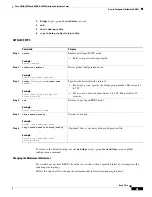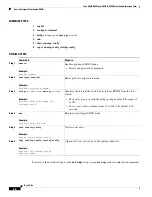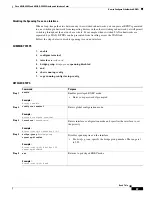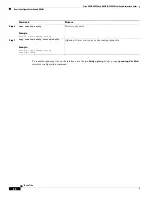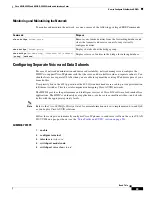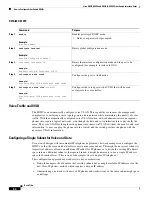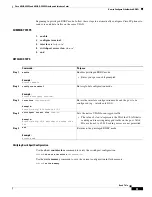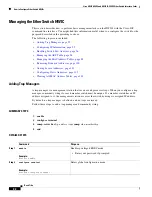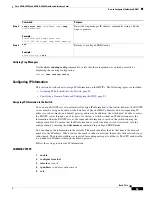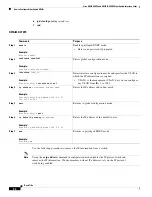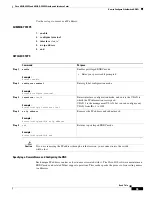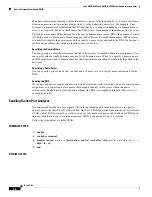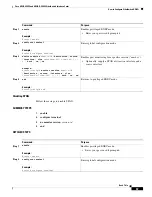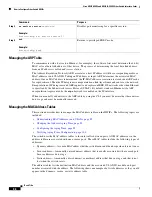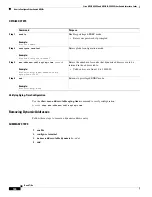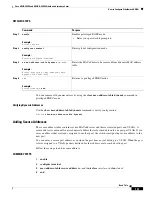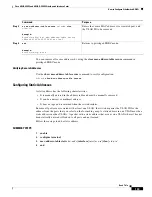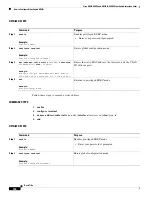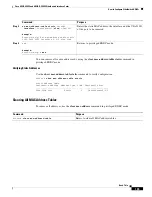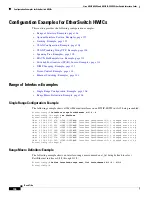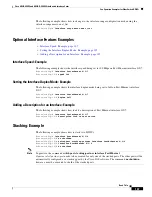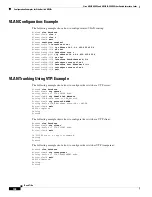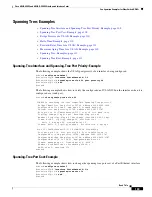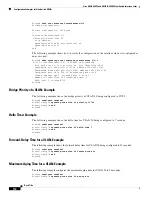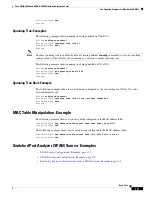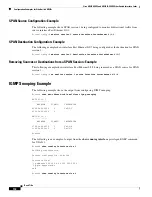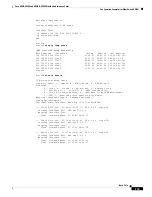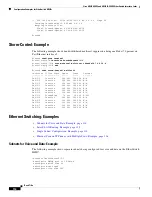
Cisco HWIC-4ESW and HWIC-D-9ESW EtherSwitch Interface Cards
How to Configure EtherSwitch HWICs
99
Book Title
Router#
show mac-address-table
Destination Address Address Type VLAN Destination Port
------------------- ------------ ---- --------------------
000a.000b.000c Secure 1 FastEthernet0/1/8
000d.e105.cc70 Self 1 Vlan1
00aa.00bb.00cc Static 1 FastEthernet0/1/0
Understanding MAC Addresses and VLANs
All addresses are associated with a VLAN. An address can exist in more than one VLAN and have
different destinations in each. Multicast addresses, for example, could be forwarded to port 1 in VLAN
1 and ports 9, 10, and 11 in VLAN 5.
Each VLAN maintains its own logical address table. A known address in one VLAN is unknown in
another until it is learned or statically associated with a port in the other VLAN. An address can be secure
in one VLAN and dynamic in another. Addresses that are statically entered in one VLAN must be static
addresses in all other VLANs.
Changing the Address Aging Time
Dynamic addresses are source MAC addresses that the switch learns and then drops when they are not
in use. Use the Aging Time field to define how long the switch retains unseen addresses in the table. This
parameter applies to all VLANs.
Configuring the Aging Time
Setting too short an aging time can cause addresses to be prematurely removed from the table. Then
when the switch receives a packet for an unknown destination, it floods the packet to all ports in the same
VLAN as the receiving port. This unnecessary flooding can impact performance. Setting too long an
aging time can cause the address table to be filled with unused addresses; it can cause delays in
establishing connectivity when a workstation is moved to a new port.
Follow these steps to configure the dynamic address table aging time.
SUMMARY STEPS
1.
enable
2.
configure terminal
3.
mac-address-table aging-time
seconds
4.
end

